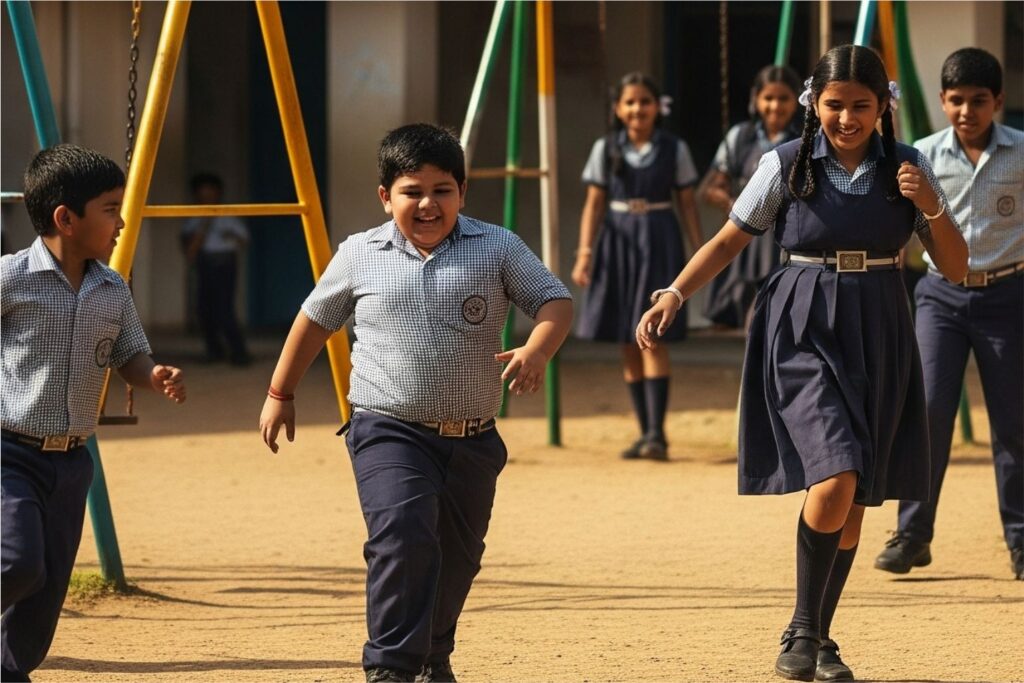
A new study by the All India Institute of Medical Sciences (AIIMS) has raised alarms over increasing rates of obesity and hypertension among school-going children in Delhi.
The research revealed that obesity prevalence in private schools stands at 24.02 per cent, more than five times higher than that in public schools. The study also indicated that both private and public schools reported similar figures for hypertension at 7.4 per cent.
Also Read | Kerala rolls out name slips in schools to combat drug abuse
The study, funded by the Indian Council of Medical Research (ICMR), tracked the health status of 3,888 students aged between six and 19, comprising 1,985 from public schools and 1,903 from private schools.
The researchers found that 13.4 per cent of children were generally obese, on average, while 9.2 per cent exhibited central obesity, characterised by excess belly fat. Both conditions are known risk factors for diabetes and heart disease later in life. These figures indicate a large increase compared to a similar 2006 study, which reported an obesity prevalence of just 5 per cent among schoolchildren.
The prevalence of obesity was much higher in private schools, which reported 24.02 per cent general obesity and 16.77 per cent central obesity, as compared to 4.48 per cent general obesity and 1.83 per cent central obesity in public schools, the Indian Express reported. Noticeably, the prevalence of obesity is higher among boys than girls in both types of schools.
Hypertension prevalence was found to be over 7 per cent, with no significant difference between public and private school students or between boys and girls. However, children in private schools were found to be twice as likely to have elevated blood sugar levels and three times as likely to suffer from metabolic syndrome, a cluster of conditions that often precedes diabetes and heart disease.
About 34% of all students had dyslipidaemia, an abnormal blood fat profile involving cholesterol and triglycerides. Private school students had 2.37 times higher prevalence of impaired fasting plasma glucose and 3.51 times higher prevalence of metabolic syndrome than public school students.
Dr. M. Kalaivani, Assistant Professor of Biostatistics at AIIMS and the study’s principal investigator, recommended that midday meal programs focus on increasing protein and fibre intake rather than excessive carbohydrates. “Educating parents on what food they are giving to their children is also important,” she said, the Indian Express reported.
Dr. Nikhil Tandon, Professor and Head of the Department of Endocrinology and Metabolism at AIIMS and co-principal investigator of the study, highlighted that without early intervention, these risk factors could lead to a significant burden of chronic diseases in adulthood. He emphasised that children who are obese are more likely to carry that weight and the associated health problems through adulthood, making prevention a key priority.








